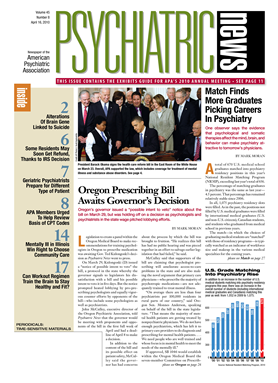The most familiar analogy to the brain is usually the computer, but that's so 20th century now.
In fact, the brain may work more like that 21st-century technology, the hybrid car. The hybrid has two engines under that sleek hood, one running on gasoline when the car needs power and the other on electricity when moving slowly or cruising or idling.
The two “engines” in the brain are actually groups of brain regions. One group constitutes the central executive network and handles the heavy lifting during cognitive tasks, when neural activity increases in the “task-positive” regions, the frontal motor areas, dorsolateral prefrontal cortex, and dorsal anterior cingulate gyrus.
Neural activity decreases, however, during cognitive tasks in other, “task negative” regions that define the default-mode network.
“The default-mode network is active when the person is not focused on the external environment,” said Ruth Lanius, M.D., Ph.D., at the Anxiety Disorders Association of America's annual conference in Baltimore in March. “It operates when individuals are engaged in internally focused tasks, like autobiographical memory retrieval, envisioning the future, and conceiving the perspectives of others.”
It may serve to consolidate and stabilize memories for later processing.
Network Operations Reflect PTSD
The two networks and the relationship between them may also have something to do with posttraumatic stress disorder (PTSD), said Lanius, an associate professor in the Department of Psychiatry at Canada's University of Western Ontario.
For one thing, the default network and PTSD both seem associated with the same areas of the brain such as the medial prefrontal cortex, anterior cingulate, and posterior cingulate cortex.
Lanius's brain-imaging studies of 12 accident victims found that connectivity involving some of these areas was associated with current PTSD symptoms or predicted such symptoms at 12 weeks after the accident.
A second relationship between the executive and default networks may be reflected in how the brain switches from one to the other, she said.
In working-memory tasks, healthy control subjects show more activity in the central executive network compared with those with PTSD. The PTSD group may have more difficulty engaging the executive network, and so moving out of the default-mode network and into cognitive tasks becomes more difficult.
The subjects with PTSD in Lanius's study showed stronger connectivity between the prefrontal cingulate cortex and the right superior frontal gyrus and between the medial prefrontal cortex and the left parahippocampal gyrus, areas previously implicated in the default-mode network.
The different connectivity patterns and neural networks used by the controls, compared with the PTSD subjects, suggest group differences in orientation during a working-memory task and difficulties switching between the two networks, she concluded.
Lanius's next step is to replicate the findings in a larger sample and explore more regions of the brain. She will also compare patients whose PTSD is associated with early-life trauma with those who developed the disorder as adults.
Responses to Danger Cues Differ
In another talk, National Institute of Mental Health researcher Shmuel Lissek, Ph.D., reported on research relating fear conditioning to PTSD.
He uses psychological tests to reveal the subjects' responses to conditioned danger cues and conditioned safety cues arrayed on a gradient. The safety cue was a small circle. The danger cue was a large circle accompanied by a “highly uncomfortable but not painful” electric shock to the wrist.
The subjects saw a circle—large, small, or in between—on a computer screen. In healthy controls, the response to the danger cue was greater than that to the safety cue. The PTSD patients, however, showed elevated responses even as the circles declined in size toward the safety end of the continuum.
“The controls had a higher discrimination between safety and danger, while the PTSD patients had poorer discrimination,” said Lissek. “They overrespond to safety cues that resemble danger cues.”
Thus the PTSD patients generalized their danger response to stimuli well beyond that of actual danger, he said. “There is a strong persistence of danger response even as the conditioned danger cue declines.”
Also, the control subjects responded with more hesitation to intermediate cues, indicating greater uncertainty in discriminating threat from danger. The subjects with PTSD had much faster reaction times to those intermediate cues, implying that overgeneralization may be a marker for PTSD.
Lissek said that these results should be considered preliminary since he is still gathering data, but that they do indicate new paths for research.

